New Bill Requires Local Governments to Approve Solar and Wind Projects
As number of projects grow Wisconsin Republican legislators want local sign-off.
The first few times Ed Howell was approached by a developer about leasing some of the land on his southeast Wisconsin dairy farm to a large solar project, he wasn’t interested.
“We ran him off a few times, and he kept coming back,” Howell joked.
Howell has been dairy farming for as long as he can remember. His farm house in Union Grove was built before electricity or indoor plumbing. His father and grandfather both ran the farm before him.
He’s getting older, he said, and it’s getting harder to farm. The agreement allows him to cut back while having an income source.
“Everybody’s story is different. But a lot of guys our age or older are looking for retirement,” Howell said. “Nobody ever got rich farming around here. Instead of selling (the farm) and moving to town, you can still retain ownership and still stay here.”
The large-scale solar project Howell was approached about years ago is up and running. It’s the Paris Solar Park in Kenosha County that went into service in December. It features nearly 500,000 solar panels that can produce enough electricity to power more than 55,000 homes annually.
It’s part of a wider expansion of solar energy across the state over the last decade.
In 2015, the Public Service Commission had not yet gotten an application for a utility-scale solar project, according to the agency. By the end of 2020, seven solar projects had been approved by regulators. And by the end of 2024, 30 solar projects had been approved.
Clean energy advocates say these projects are an essential part of the transition away from fossil fuels. But some critics of the projects say local communities don’t get a say in where they go up.
A new bill proposed by Republicans would require local governments to sign off on solar or wind projects before they go to state regulators.
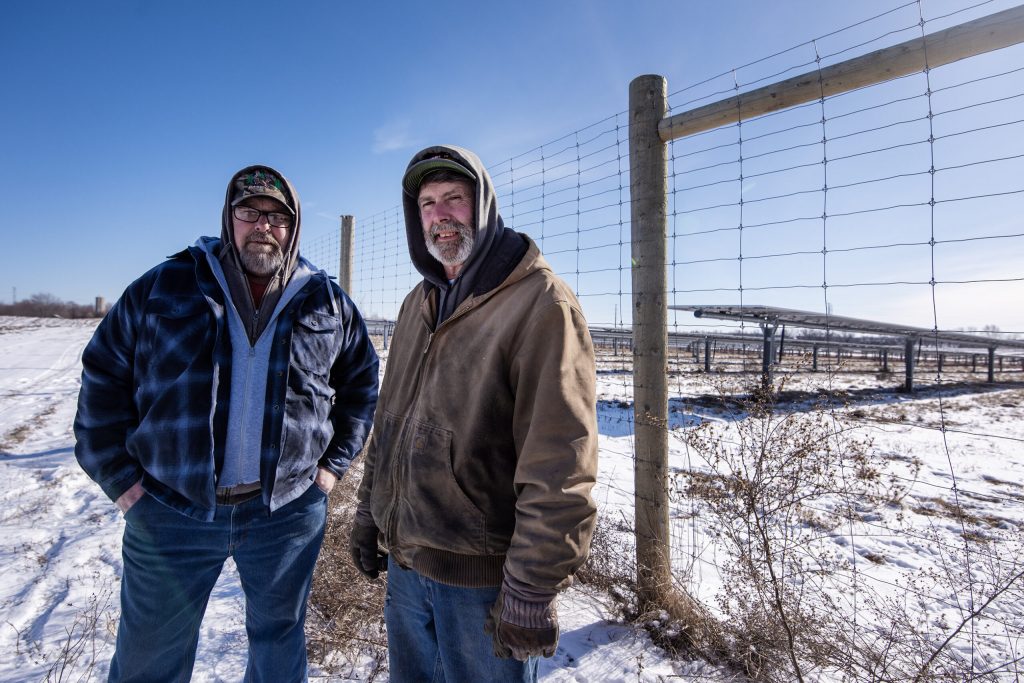
Ed Howell and his brother Bill Howell stand near solar panels on their property Friday, Jan. 24, 2025, in Union Grove, Wis. Angela Major/WPR
Bill singles out wind and solar for local approval
Electric facilities with a generating capacity of 100 megawatts or more need a certificate of public convenience and necessity from the Public Service Commission of Wisconsin, and do not need to be approved by local municipalities. That applies to all such projects, whether they generate electricity using solar, wind, natural gas or coal.
A new bill would require solar or wind projects producing 15 megawatts or more receive to get approval from each city, village and town in which the project is located. The PSC would not be able to approve solar or wind projects without local approvals.
State Rep. Travis Tranel, R-Cuba City, is one of the bill’s authors. He said local governments do not have a voice in the growing number of renewable energy projects being proposed across Wisconsin.
“There’s really not any opportunity to keep a project from being approved,” Tranel said. “As long as they check all the boxes, PSC will approve the project. It’s quite clear to me that locals should have more input and more say in siting these projects.”
“I am certainly not anti-renewable energy. But what we are doing is going to have a lasting and dramatic impact on what rural Wisconsin looks like,” he added. “If we are going to do that, we should be doing it more intelligently. We should be doing it more purposely.”
One Wisconsinite who welcomes more local input is Ron Taub, who lives on Lake Arrowhead in the town of Rome. He’s concerned about a 200-megawatt solar project that has been proposed in his Adams County town. The project will be located on approximately 2,409 acres, according to an engineering plan.
“I had to buy a $200 permit to put up a 10-by-15 shed on my property. I had to get approval from the town zoning (and) I had to get approval from Lake Arrowhead for a 150-square-foot item,” Taub said. “Then you can put up 2,000 acres of solar panels and we have no control.”
Though they’ve grown in recent years, solar projects do not yet take up a large share of Wisconsin’s farmland. According to data from the Public Service Commission of Wisconsin, solar projects either built or approved by the end of last year accounted for 35,299 acres, or about 1 percent of Wisconsin’s roughly 35 million acres of land.
The most recent year the agency has estimates for how many agricultural land acres were used or planned to be used by solar projects is 2023. The more than 28,000 acres of approved solar projects that year accounted for about 0.23 percent of agricultural land.
Renewables are key to state, utility climate goals
In 2019, Gov. Tony Evers signed an executive order establishing the state’s goal to reach 100 percent carbon-free electricity by 2050. The state’s major utilities have also set goals to achieve net-zero emissions by 2050.
Meeting those goals would require between 240,000 to 285,000 acres of solar with current technology, which equates to around 2 percent of the state’s agricultural land, according to a 2023 report from Clean Wisconsin.
We Energies is the majority owner of the 1,500-acre Paris Solar Park in Kenosha County, the first large-scale renewable energy project built in southeastern Wisconsin. The site was under construction for about two years before it started generating power late last year.
Bob Frazee, a supervisor at the Paris Solar Park who works for We Energies, gave a tour of the site last month. He said the operational maintenance issues at a solar park are “very minimal compared to a larger gas- or coal-fired power plant.”
Frazee said the panels can absorb energy on both sides and are programmed to move with the sun throughout the day to ensure they absorb the most sunlight possible.
“You come out here midday, when the sun’s kind of directly above us — those panels will be basically level,” he said as he walked through the park.
In addition to solar panels, there are also 110 megawatts of battery storage under construction at the Paris site. Conway said We Energies hopes to bring the storage system online in May.
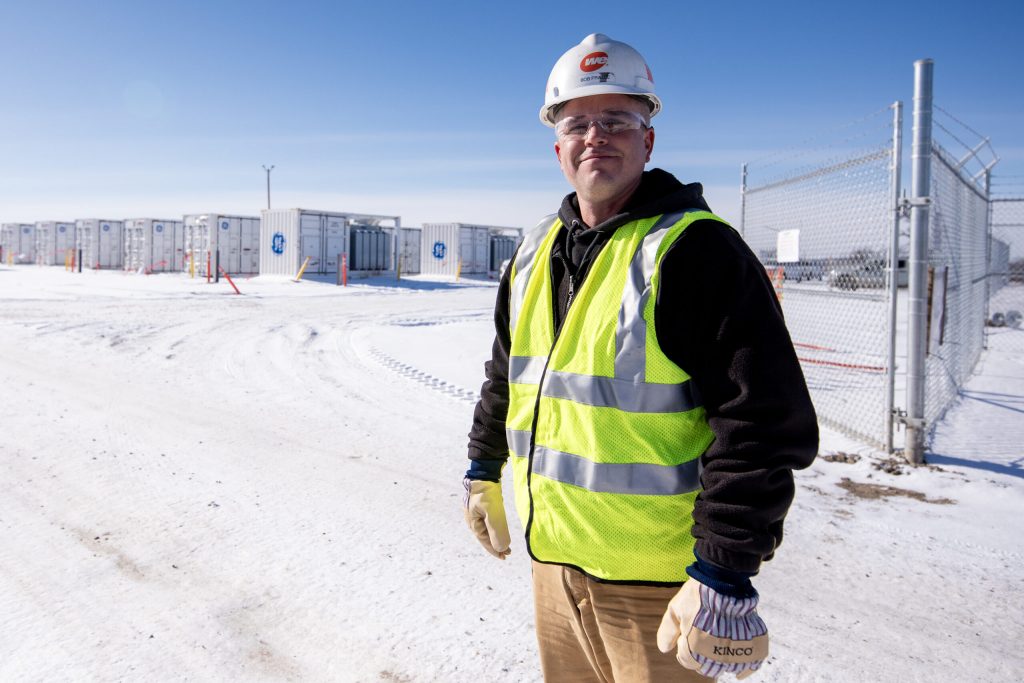
Paris Solar Park supervisor Bob Frazee stands at the battery site near the solar farm Friday, Jan. 24, 2025, in Union Grove, Wis. Angela Major/WPR
PSC: Agency uses an ‘extensive, months-long process’
Meghan Sovey-Lashua, a spokesperson for the PSC, said via email the agency prioritizes transparency and public participation.
When developers file applications to build projects, those documents are available online, along with all documents filed as part of the process, she said. The PSC also streams its meetings on YouTube and holds public hearings in the areas where projects are proposed, allowing nearby landowners the opportunity to testify.
“This is an extensive, months-long process that results in the full record, which the Commissioners then must individually review before they can deliberate at a public open meeting,” Sovey-Lashua stated. “The record is hundreds — and sometimes thousands — of pages that includes public comments, expert witness testimony and precise specifications about the proposed project.”
But local opposition to renewable energy projects has become a growing issue that presents a challenge to achieving climate goals nationally, according to a 2024 report from Columbia Law School’s Sabin Center for Climate Change Law.
The report identified at least nine towns in Marathon and Clark counties that have adopted ordinances more limiting of wind projects than state law. The towns of Brighton and Eau Pleine were sued by a developer over those ordinances last year. That case is still ongoing.
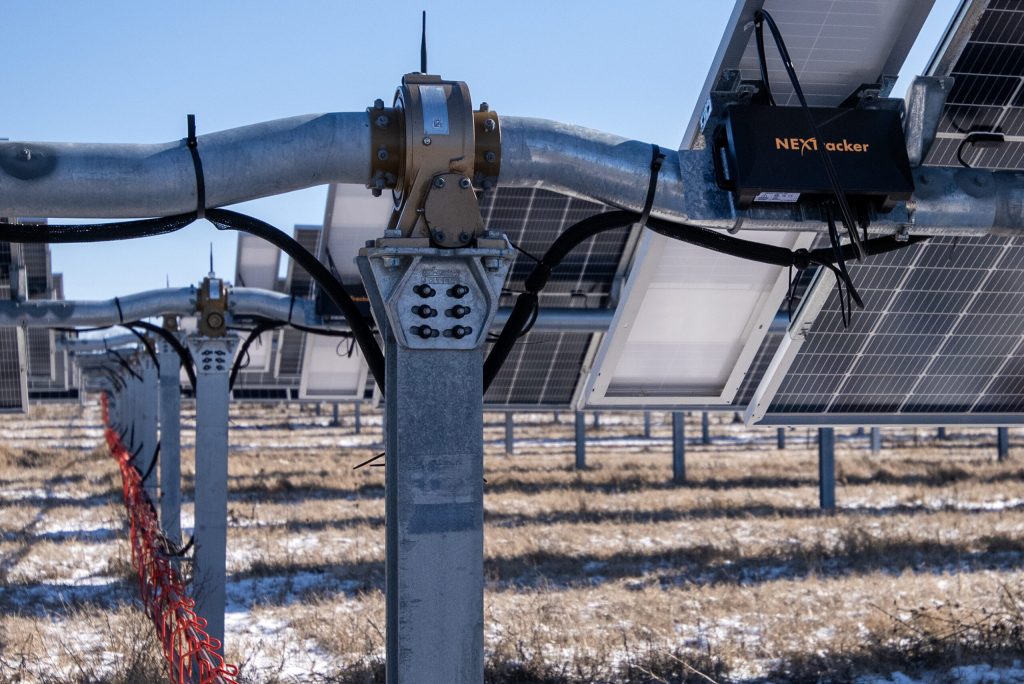
A device connected to the solar panels allows for them to follow the path of the sun Friday, Jan. 24, 2025, in Union Grove, Wis. Angela Major/WPR
‘The norm is that farmers decide what they do on their property’
Chelsea Chandler runs an organic fruit and vegetable farm in Lafayette County, and is the energy and air program director for the nonprofit Clean Wisconsin. She said the bill that would require local governments to approve clean energy projects would slow the clean energy transition. She said it would also represent a change for farmers.
“The norm is that farmers decide what they do on their property,” she said. “We don’t typically ask community leaders to vote on what farmers are doing in other contexts. This is sort of a novel idea that’s being proposed for solar and wind specifically.”
She acknowledged the scenery in rural Wisconsin is changing as more renewable energy projects come into service. She also said rural landscapes have previously changed as technology advances.
“When I was growing up, there weren’t cellphone towers everywhere,” she said. “Now they’re part of the landscape. But they bring a lot of benefits to our communities.”
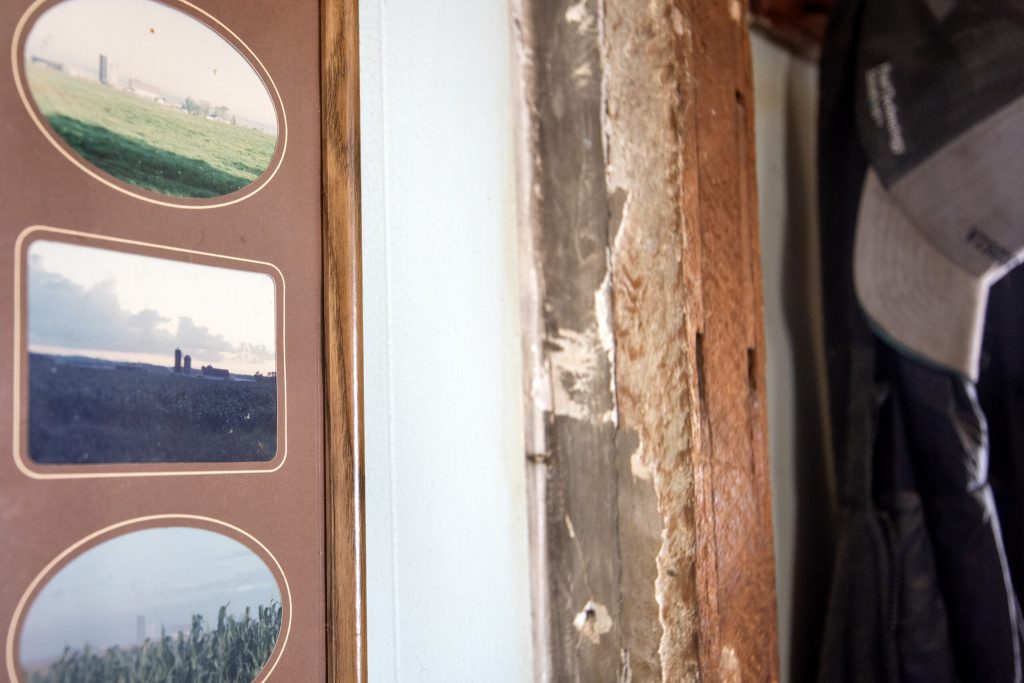
Photos of Ed Howell’s farm prior to the installation of solar panels are hung inside of his home Friday, Jan. 24, 2025, in Union Grove, Wis. Angela Major/WPR
State law requires the owners of solar farms producing more than 50 megawatts to pay annually into a utility aid fund which is shared with local governments hosting those sites. RENEW Wisconsin estimates a 100-megawatt solar farm each year would provide $233,000 to the host county and around $167,000 to the host township or townships.
“It is helping to plug holes in budgets,” she said. “I understand from living in a small community, our budgets are really tight, and it is frankly heroic what a lot of small communities are able to do on limited funds.”
Chandler also said the lease agreements property owners sign allowing their land to be used for solar projects can be a “really sound business decision for farmers.” She said those contracts typically last around 30 years and can be used as a stable income stream.
“It provides farmers with the assurance that they have some more financial security,” Chandler said. “It lets them feel like they’ve got some certainty for their time farming.”
Howell, the farmer in Union Grove, admits it was sad seeing the panels go in on his land because he’s “walked across about every inch” of it over his lifetime. But overall he’s satisfied with the arrangement, saying it will help him pass the farm to the next generation someday. He still farms beef cows and said it keeps him “plenty busy.”
Developers say community outreach is crucial
While renewable energy projects across the country may be facing more local opposition, Sovey-Lashua with the Public Service Commission said regulators have seen a trend recently of developers doing community outreach earlier in the process, before submitting an application in some cases.
“In reaching out earlier, developers are seeking community input and working to build trust with community members,” she said in an email. “This outreach and the input they receive has contributed to modifications in a project’s scope and has created conditions mutually agreed upon by all parties to protect landowners and invest in local infrastructure and schools.”
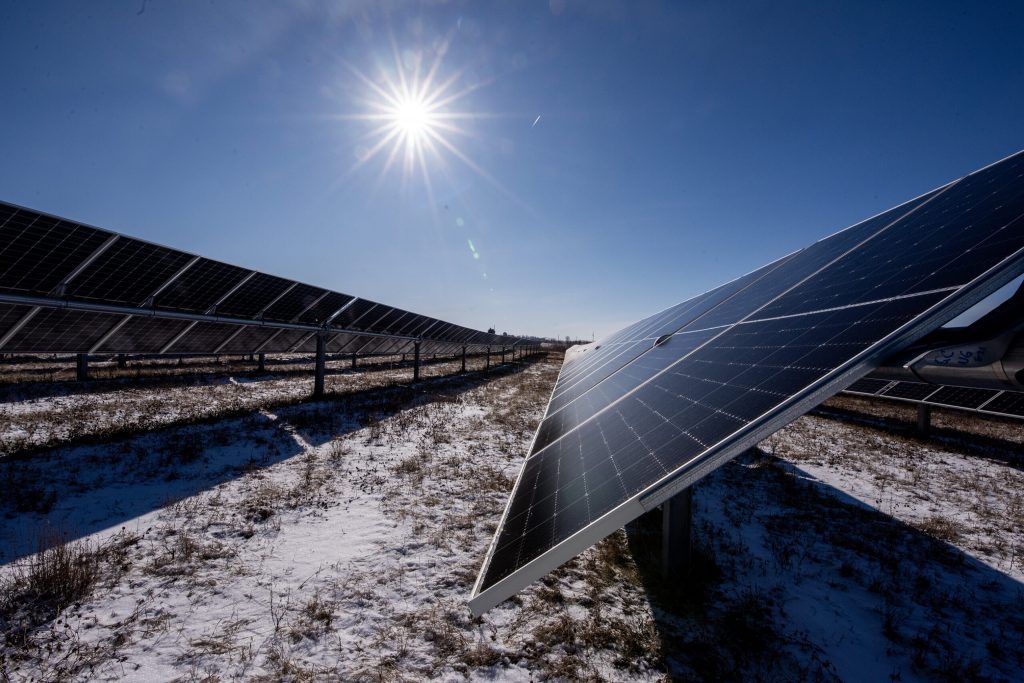
The sun shines onto solar panels at the Paris Solar Park o Friday, Jan. 24, 2025, in Union Grove, Wis. Angela Major/WPR
NextEra Energy is a Florida-based developer working on several solar projects in Wisconsin right now, including the development in the town of Rome.
Its planned project in Rome and a 100-megawatt solar project in Oconto County have faced some pushback from the community. In November, some community members protested the Oconto County project ahead of a community informational meeting with developers, according to WGBA-TV.
Danilo Cabrera, a project director for NextEra who’s leading the Wisconsin projects, said the company has been investing in energy infrastructure in the state since 2007. In both the projects in Adams County and Oconto County, he said developers were communicating with the local residents before filing applications with state regulators.
“It’s very important to have an open channel of communication for us in providing the status of a particular project to the town residents,” Cabrera said. “It’s always important to have this ongoing dialog. These projects take years just to build. Then, throughout the operational lifetime of a project, this is a dialogue that’s always ongoing.”
New bill would require local governments to approve solar and wind projects in Wisconsin was originally published by Wisconsin Public Radio.
If you think stories like this are important, become a member of Urban Milwaukee and help support real, independent journalism. Plus you get some cool added benefits.


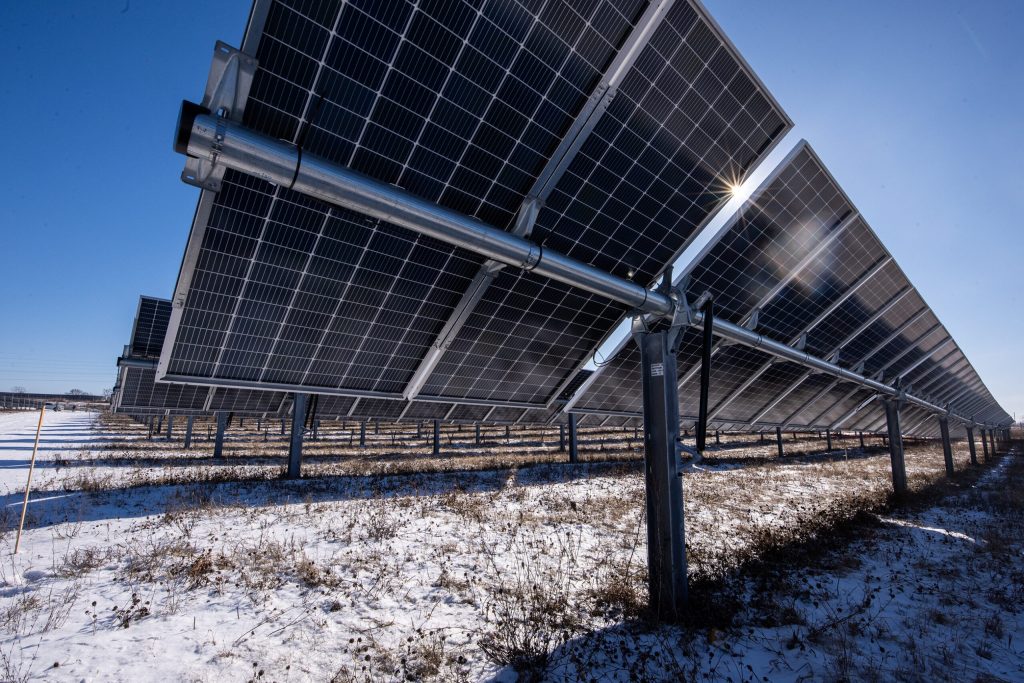
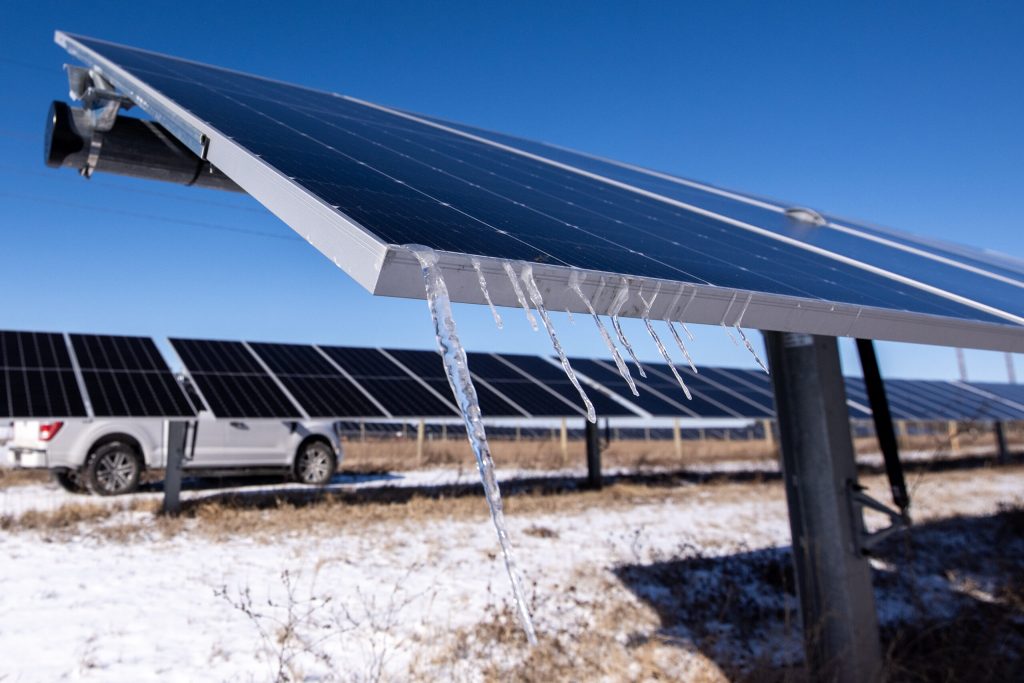
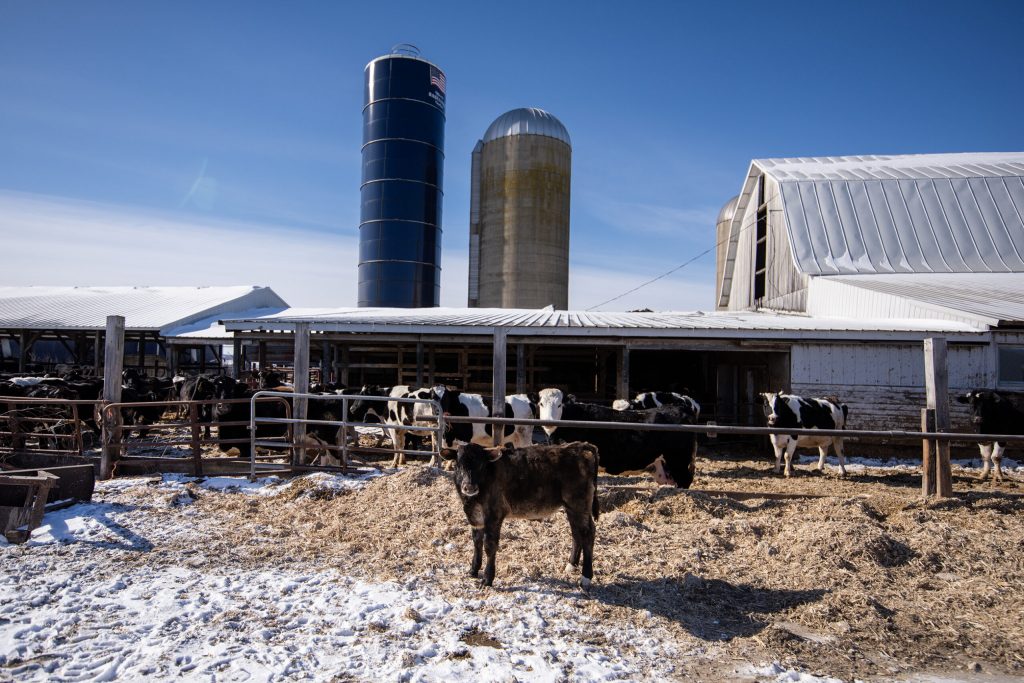
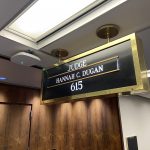

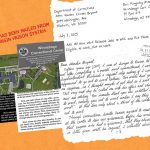

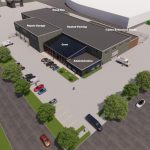




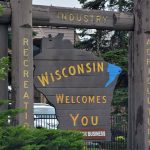


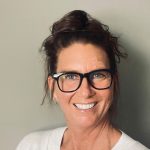






It would be nice to have clear guidance for urban residential use of solar, wind, and geo-thermal sources of energy generation. Do any governmental agencies regulate–city, county, state?
I thought republicans didn’t want government in the way???
The planet is on fire, we cannot be pumping the brakes on solar/wind rollout.